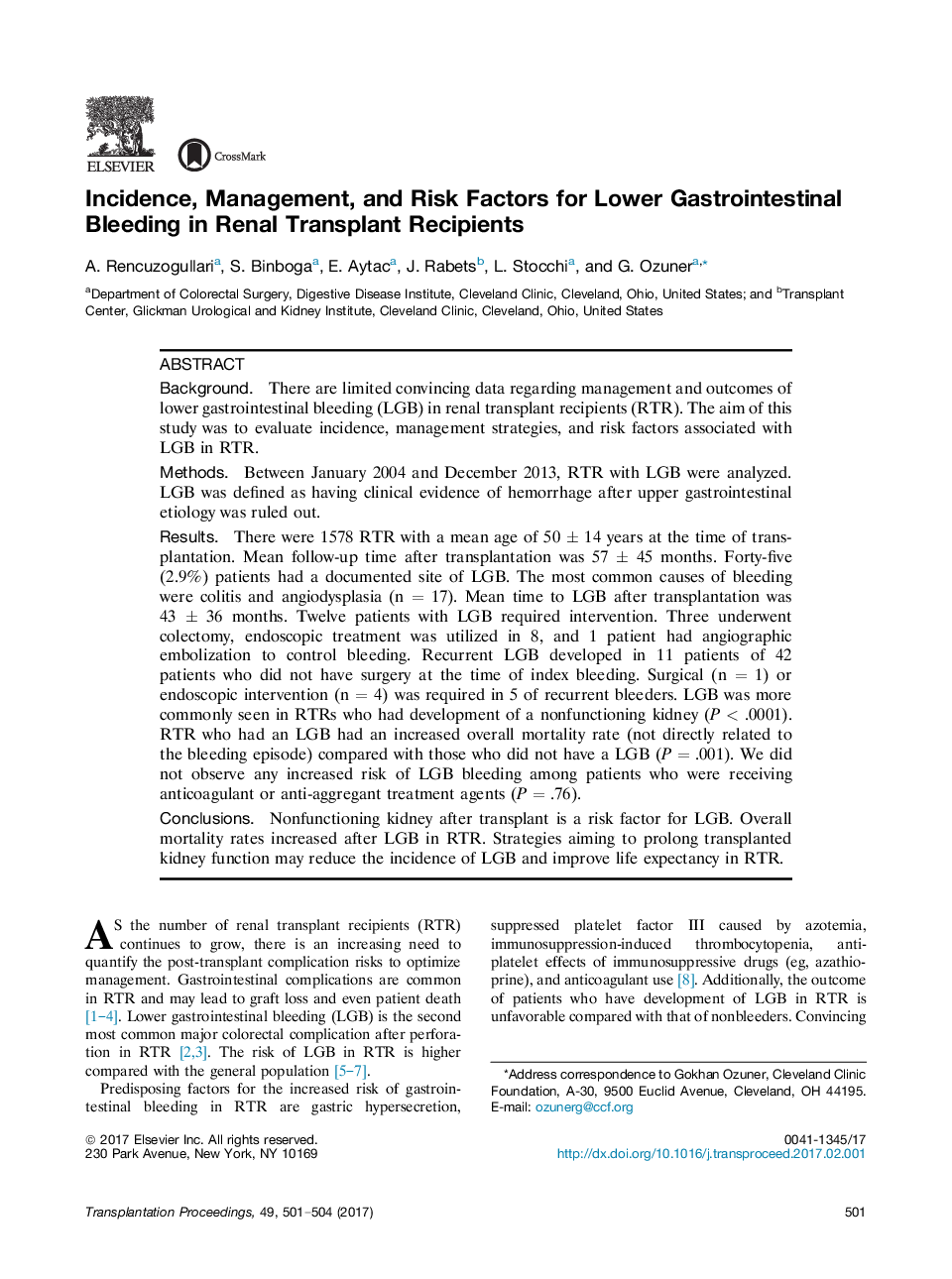| Article ID | Journal | Published Year | Pages | File Type |
|---|---|---|---|---|
| 5728864 | Transplantation Proceedings | 2017 | 4 Pages |
BackgroundThere are limited convincing data regarding management and outcomes of lower gastrointestinal bleeding (LGB) in renal transplant recipients (RTR). The aim of this study was to evaluate incidence, management strategies, and risk factors associated with LGB in RTR.MethodsBetween January 2004 and December 2013, RTR with LGB were analyzed. LGB was defined as having clinical evidence of hemorrhage after upper gastrointestinal etiology was ruled out.ResultsThere were 1578 RTR with a mean age of 50 ± 14 years at the time of transplantation. Mean follow-up time after transplantation was 57 ± 45 months. Forty-five (2.9%) patients had a documented site of LGB. The most common causes of bleeding were colitis and angiodysplasia (n = 17). Mean time to LGB after transplantation was 43 ± 36 months. Twelve patients with LGB required intervention. Three underwent colectomy, endoscopic treatment was utilized in 8, and 1 patient had angiographic embolization to control bleeding. Recurrent LGB developed in 11 patients of 42 patients who did not have surgery at the time of index bleeding. Surgical (n = 1) or endoscopic intervention (n = 4) was required in 5 of recurrent bleeders. LGB was more commonly seen in RTRs who had development of a nonfunctioning kidney (P < .0001). RTR who had an LGB had an increased overall mortality rate (not directly related to the bleeding episode) compared with those who did not have a LGB (P = .001). We did not observe any increased risk of LGB bleeding among patients who were receiving anticoagulant or anti-aggregant treatment agents (P = .76).ConclusionsNonfunctioning kidney after transplant is a risk factor for LGB. Overall mortality rates increased after LGB in RTR. Strategies aiming to prolong transplanted kidney function may reduce the incidence of LGB and improve life expectancy in RTR.
